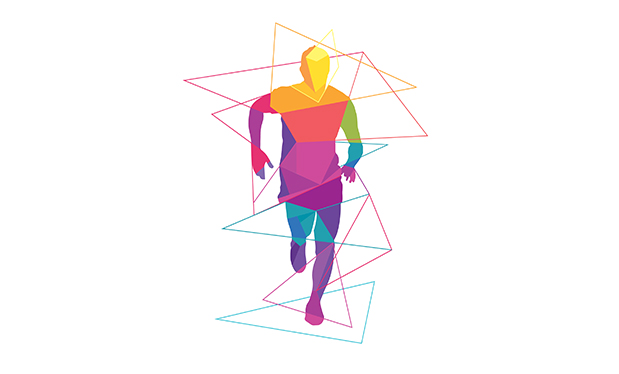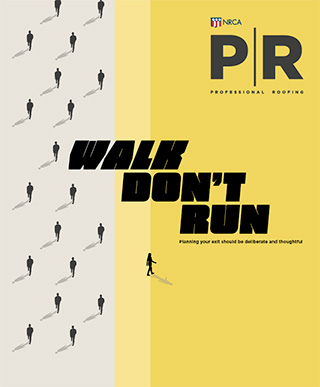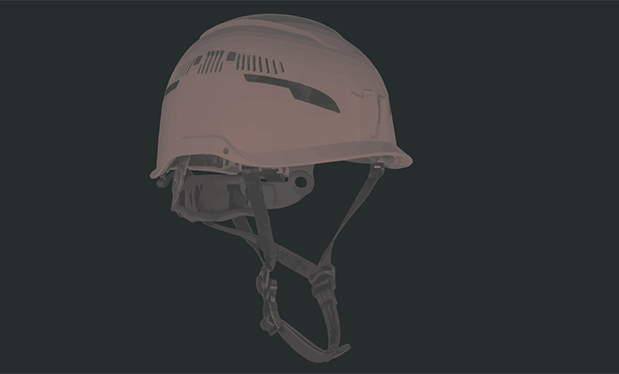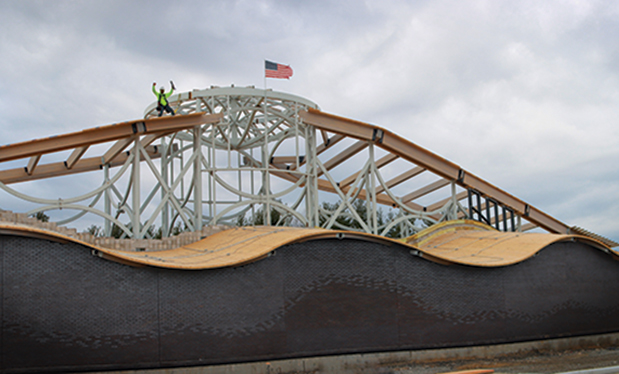
Roofing workers routinely are exposed to strenuous tasks, heavy lifting, repetitive motions and awkward postures, so it’s hardly a revelation the roofing industry is physically demanding.
And though these occupational challenges can affect workers of all ages, older individuals often face heightened risks of developing musculoskeletal disorders. As we age, our bodies undergo a natural process of degeneration. Over time, bones tend to decrease in size and density, rendering them weaker and more susceptible to fractures. Concurrently, muscles undergo a decline in strength and flexibility, significantly affecting overall mobility. As the median age of roofing workers increases, the need to prevent workplace MSDs emerges as a critical priority for promoting occupational health and longevity among roofing workers.
Some data
The National Institute for Occupational Safety and Health characterizes MSDs as soft-tissue injuries resulting from prolonged or sudden exposure to repetitive motion, force, vibration or awkward positions. These conditions affect muscles, nerves, tendons, joints and cartilage and traditionally stem from tasks such as lifting, pulling, pushing, maintaining posture, enduring hot temperatures, and coping with torque reactions and machinery vibrations.
Over time, these injuries tend to lead to chronic, debilitating pain that can significantly impair an individual’s ability to work safely and efficiently, especially if left untreated. As roofing workers progress through their careers, they can become more susceptible to these types of injuries and the risk of MSDs may be heightened.
Recent figures from the Bureau of Labor Statistics highlight a growing pattern regarding the aging workforce, specifically within the construction industry. The proportion of workers aged 55 and older has risen from 11.5% in 2003 to 22.7% in 2020. It’s imperative for roofing contractors to acknowledge the importance of this demographic shift and understand how it can affect maintaining an effective, forward-looking safety program that tackles issues such as MSDs.
The cost of MSDs
MSDs have significant repercussions for roofing workers and contractors. Workers affected by MSDs may become absent from work and personal activities; face escalating healthcare expenses related to medical treatment and rehabilitation; and possibly end up in long-term care. Furthermore, these disorders can diminish productivity as workers grapple with pain, discomfort or limited mobility, hindering their ability to efficiently perform tasks.
For roofing contractors, the financial strain of MSDs is considerable, encompassing worker absenteeism, increased workers’ compensation costs, elevated healthcare insurance premiums and potential legal expenses. Moreover, MSDs can disrupt project schedules and contribute to higher labor turnover rates, further undermining productivity and profitability.
According to CNA Insurance Cos., Chicago, in 2018, musculoskeletal-related injuries were the most frequently reported injury in the roofing segment with more than 900 claims in excess of $20 million during that year alone.
In 2021, the Centers for Disease Control released findings from a third-party study examining workers’ compensation claims and costs associated with MSDs. The study focused on overexertion among construction workers in Ohio from 2007-17. One of the most significant takeaways from this study showed workers aged 35 to 44 years experienced the highest claim rate (63 per 10,000 full-time employees). However, claims by workers aged 45 to 54 years and 55 to 64 years were more costly on average and resulted in more lost workdays. Injuries and lost workdays can substantially raise a roofing contractor’s workers’ compensation expenses and experience modification ratings, presenting significant operational challenges.
Prevention
For roofing contractors, integrating job hazard analyses into every project is imperative. Regrettably, these assessments are frequently underutilized, and attention usually is solely focused on immediate safety hazards such as falls from heights. Comprehensive evaluations enable contractors to mitigate short-term risk and appropriately account for seemingly minor safety issues that may lead to significant long-term health problems, such as chronic MSDs.
Keep in mind, each person’s body responds differently to physical demands and is influenced by factors such as overall health, genetics and personal biomechanics. What may pose a significant strain on one worker’s body may have minimal effect on another. Accounting for individual variations can be challenging because there is no one-size-fits-all solution. Recognizing the variability in how these factors affect workers underscores the importance of proactive and personalized approaches to musculoskeletal injury prevention.
You should tailor your strategies for injury prevention and ergonomic interventions according to your specific exposures and circumstances. Although each employer faces unique challenges, there are several proactive measures any roofing contractor can adopt to help mitigate and prevent the onset or exacerbation of MSDs while promoting the overall well-being of employees, fostering a culture of safety awareness, and encouraging open communication regarding discomfort or injury symptoms to further enhance prevention efforts.
Safe lifting
Lifting with the knees, not the back, is crucial for preventing injuries and maintaining musculoskeletal health. Bending at the knees while keeping the back straight balances weight distribution, reducing strain and minimizing injury risk. Incorrect lifting techniques can strain the spine and surrounding muscles, leading to injuries such as herniated discs. Employers must prioritize implementing a comprehensive policy for safe lifting practices, including clear guidelines and training programs emphasizing proper lifting techniques, particularly using the knees instead of the back when lifting heavy objects. However, it’s important to acknowledge individuals can have differing lifting experiences, so exercise caution when defining maximum lift weights in policies.
Technology
Technological advancements have enabled contractors to better manage the amount of stress placed on workers during material lifting and movement. Lifting aids, such as wearable exoskeleton devices, have revolutionized workplace safety by significantly reducing the risk of MSDs among employees. NRCA, in collaboration with CPWR–The Center for Construction Research and Training, supports research led by Maury Nussbaum, Ph.D., CPE, assistant department head and graduate program director for the Department of Industrial & Systems Engineering at Virginia Tech in Blacksburg, Va., aimed at developing and evaluating training in the use of exoskeletons for the construction field and assessing the longer-term effects of exoskeleton use.
Other studies, including one published by the National Safety Council, have demonstrated passive shoulder exoskeleton devices can reduce muscle activity by up to 40% using surface electromyography studies. These devices not only offer mechanical support during lifting and repetitive activities but also promote proper body mechanics, thereby reducing the likelihood of injuries.
Artificial intelligence, specifically computer vision systems, is gaining prominence. According to an NSC publication, these systems extract meaningful information from digital images and videos, allowing for recommendations or actions based on that data. Human motion capture systems, including mobile phone applications, record workers’ tasks. Computer vision systems analyze these recordings to identify ergonomic risk factors, highlight MSD risks and suggest safety modifications. This streamlined approach enables quick, cost-effective deployment of safety measures, prioritizing roles and tasks for redesign to ensure a safer, more efficient work environment.
Training
The success of any safety program depends on effective training. Tailoring training programs to meet the distinct needs and capabilities of younger and older workers is essential for minimizing the risks associated with MSDs. By offering ongoing education and support, you can ensure all employees, regardless of age, possess the necessary skills and knowledge to maintain safety and wellness on the job. Incorporating hands-on, practical examples specific to the roofing industry into training sessions has consistently proved to be an effective method for engaging workers and reinforcing essential safety practices.
Stretch and flex
Each morning, cats and dogs instinctively perform a similar ritual: They stand up and stretch. Unfortunately, many humans lack this instinctual behavior. Stretching, according to Mayo Clinic studies, enhances flexibility and improves joint range of motion. Implementing a stretch and flex program is one strategy you can embrace to emphasize the importance of musculoskeletal health.
Targeted stretching exercises that alleviate muscle tension and enhance flexibility in areas prone to strain during roofing tasks, such as the back, shoulders, knees and legs, can help. By incorporating stretching and flexing regimens, you can proactively reduce the risk of musculoskeletal disorders, enhance physical endurance and foster a safer work environment.
Additionally, these programs can enhance mental well-being by providing workers with a break and foster camaraderie among crews. Prioritizing physical and mental health through such initiatives cultivates a work culture that values employee well-being.
Heat stress
Exposure to excessive heat can play a significant role in the development of MSDs. Prolonged exposure to heat combined with poor heat stress management increases the likelihood of muscle injuries. Dehydration exacerbates MSD risks by increasing muscle fatigue and reducing muscle function.
A comprehensive heat illness prevention program can educate workers to recognize heat-related illness signs, establish hydration and rest breaks practices, and implement engineering controls such as shade and ventilation.
The American National Standards Institute and American Society of Safety Professionals recently published a new voluntary consensus standard, ANSI/ASSP A10.50, “Standard for Heat Stress Management In Construction And Demolition Operations,” which is a great resource for those developing or expanding a heat stress management program. Prioritizing worker health and safety by addressing heat stress boosts productivity and morale and cultivates a strong safety culture, reducing the risk of MSDs.
Employee wellness program
Wellness programs encompass a range of initiatives targeting physical and mental health improvement and provide a comprehensive strategy to address common risk factors associated with MSDs. By offering workers knowledge, tools and resources for optimal health, these programs empower them to prevent injuries and maintain productivity. Tailored interventions, including flexibility exercises and joint health education, help older workers preserve physical capabilities and reduce susceptibility to MSDs.
Additionally, wellness programs often include elements focusing on mental health and offer counseling services, stress management techniques and suicide-prevention resources to support workers’ mental resilience. Prioritizing employee health and safety fosters a positive safety culture, increases engagement, reduces absenteeism and enhances overall job satisfaction. For additional suicide prevention resources in the construction industry, visit preventconstructionsuicide.com.
Management commitment
To mitigate the risk of musculoskeletal injuries among employees, roofing contractors must prioritize management commitment. This is particularly crucial given the ongoing workforce challenges in the roofing industry. Proactive management commitment ensures safety measures are enforced and tailored to meet the diverse needs of all employees.
This involves providing comprehensive training, allocating sufficient resources and offering tailored support systems, especially for combating MSDs. By fostering a culture of safety, contractors can effectively safeguard the health and well-being of all employees, leading to a workplace environment where everyone feels valued and supported. Ultimately, this approach enhances productivity and morale across the board.
Why roofing workers are at risk of MSDs
Repetitive motions: Tasks such as hammering, material lifting and bending to install roofing materials often require repetitive movements, which can strain muscles and joints over time.
Awkward postures and positions: Crouching, kneeling or bending can put excessive stress on the musculoskeletal system. Nailing shingles, stretching to install flashings, stooping to remove debris from a roof’s surface, or twisting to reach and secure roofing materials in tight or unusual spaces can stress or strain the shoulders, arms, neck, back and knees and increase the risk of musculoskeletal injuries.
Heavy lifting: Carrying heavy roofing materials and equipment can lead to strain injuries in the back, shoulders and arms, particularly if proper lifting techniques are not used.
Prolonged standing: Long hours standing on hard surfaces can lead to foot, leg and lower back discomfort or pain.
Vibration and excessive torque exposure: The use of power tools such as nail guns, drills or saws can expose roofing workers to hand-arm vibrations or sudden shocks, which may contribute to conditions such as carpal tunnel syndrome or hand-arm vibration syndrome.
Environmental factors: Working outdoors in various weather conditions, such as extreme heat or cold, can exacerbate musculoskeletal strain and fatigue.
JOHNY J. HAYDEN III, CSP, ARM, is NRCA’s director of enterprise risk management.



